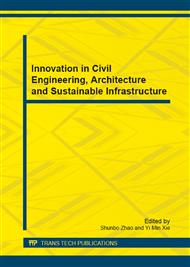p.543
p.547
p.551
p.555
p.558
p.562
p.565
p.572
p.576
Study of Natural Disasters Contract Conditions Based on the FIDIC Criteria
Abstract:
In the trend of global warming, storms, hurricanes, high temperature and other extreme weather phenomena occur frequently. In the field of project construction, the assets value of the building is exposed, so the construction projects are very vulnerable to natural disasters causing huge losses. Who bears in the both sides of engineering contract, the reasons and consequences of the loss and the specific responsibilities are ambiguous without clearly defined. This paper states the importance to grasp the principle of appropriate risk sharing and explain both responsibilities clearly in natural disasters, how to choose appropriate method to evaluate the natural disaster risk and select suitable building construction contract.
Info:
Periodical:
Pages:
558-561
Citation:
Online since:
November 2012
Authors:
Keywords:
Price:
Сopyright:
© 2012 Trans Tech Publications Ltd. All Rights Reserved
Share:
Citation:


